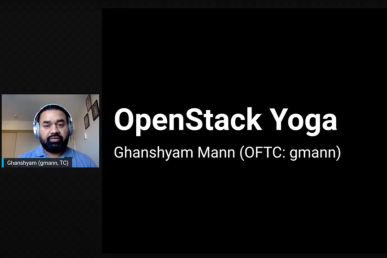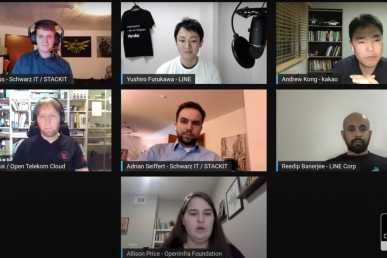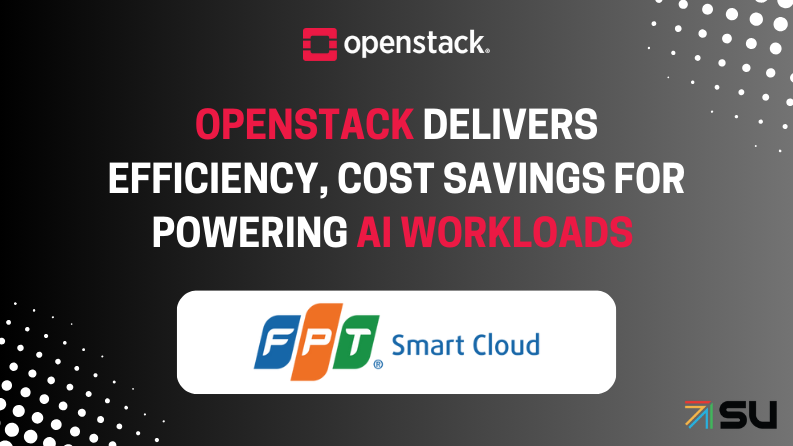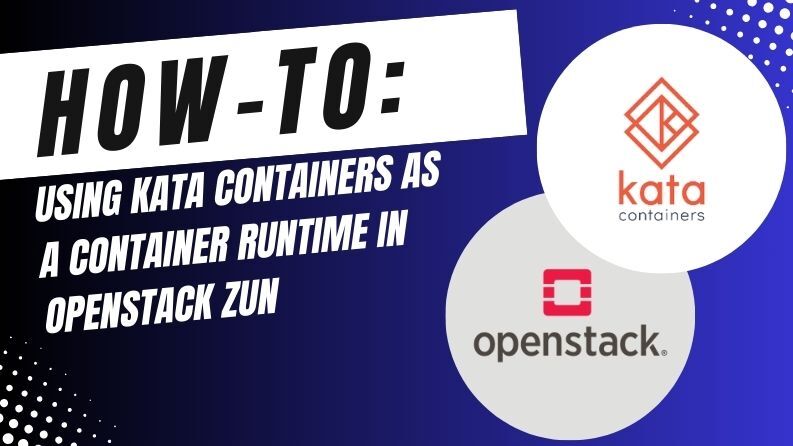“Raise your hand if you’ve heard someone say OpenStack is dead.”
— Allison Price, VP of Marketing and Community at the OpenInfra Foundation
Allison opened her keynote at OpenInfra Days North America with a question—and a smirk. The response: a wave of raised hands and a few laughs from the audience.
But then she added:
“Yeah, me too.”
That moment set the stage for a powerful counterpoint. Because when Gerald Bothello, Walmart’s Senior Director of Cloud Engineering, joined her on stage, he wasn’t there to reminisce about a dying platform; he was there to talk scale—BIG scale—and to show just how alive OpenStack is at one of the world’s largest companies.
📈 From 1,000s of Cores to 1 Million+

“We ran our first holiday season on a few thousand cores—and it worked. That got attention.”
— Gerald Bothello, Walmart Global Tech
Walmart’s OpenStack story began in 2014 with Havana. “A few engineers, a few thousand cores,” Gerald recalled. “We ran our holiday season on that, and it was successful. That was a big deal. That kind of success gets attention internally.”
That early success snowballed fast. Between 2014 and 2017, Walmart doubled its capacity every year.
By 2017, they’d blown past 100,000 cores. Gerald grinned as he recalled the moment:
“We even had 100,000-core club stickers. I still have one on my laptop.”
Of course, in today’s hyperscale world, 100,000 cores might seem quaint. But the pace didn’t slow. By 2021, Walmart had exceeded one million cores. Now, in 2025? “We’re way past that,” Gerald said casually, as if managing over a million cores was just another Tuesday.
☁️ Hybrid at Hyperscale: OpenStack + Public Cloud
Walmart’s journey didn’t stop at private cloud. As scale kept pushing boundaries, they began looking beyond their data centers.
“By 2017, we were outgrowing our data centers. So we started integrating public clouds alongside OpenStack.”
Today, Walmart’s platform is a hybrid of OpenStack and public cloud services. It runs applications seamlessly across public and private infrastructure, with OpenStack serving as the backbone for its private environments.
⚙️ Upgrades: From 30 Days to 48 Hours
In the early days—think Juno upgrades—upgrading OpenStack meant painful migrations. Gerald remembered it clearly:
“It used to take us a month to upgrade. It wasn’t fun,” Gerald said, shaking his head. “There was a lot of hand-holding, a lot of cross-team chatter. You had to migrate workloads, babysit everything.”
But that’s old news. Walmart didn’t stop at surviving upgrades—they engineered a better way. Starting in 2018, they built a stateless in-place upgrade system. No workload migration, no downtime, just seamless upgrades. Now?
“We can upgrade a cloud within a couple of days,” Gerald said. “We’re upgrading over a million cores across the fleet every year, in a three-month window. We even skip versions to move faster.”
Let that sink in: a million cores. Upgraded annually. In-place. Seamlessly.
🤖 Self-Healing Infra and Internal Tools
Running a fleet that large means automation isn’t optional—it’s oxygen.
“The team is still small. You’ve got to manage and maintain these clouds with automation.”
Walmart has built multiple layers of self-healing automation:
- On the control plane, automation monitors OpenStack components and repairs issues before they escalate.
- On the hardware layer, it pulls faulty machines out of rotation before they fail, preventing app crashes or outages.
They also use internal tools like Galaxy, which gives them a real-time view of cloud health.
“In minutes, you can see what’s broken, where it’s broken, and go fix it.”
Add telemetry dashboards and real-time insights, and Walmart’s platform doesn’t just run—it thrives.
🧠 What We Can Learn from Walmart
Gerald didn’t talk about OpenStack as legacy tech. He didn’t hedge his enthusiasm. He talked about scale, velocity, and automation—all powered by OpenStack.
“We’re still a small team,” he said. “But we’ve got automation dialed in. We upgrade fast. We recover fast. And OpenStack continues to deliver.”
Walmart isn’t using OpenStack because they’re stuck with it. They’re using it because it efficiently powers one of the world’s most demanding hybrid cloud operations on the planet.
So the next time someone says “OpenStack is dead,” maybe ask them how many cores their cloud is running.
Walmart passed a million years ago—and they’re still accelerating.
🛠 Bonus: Dig Deeper into Walmart’s Automation
Walmart provided an in-depth look at its internal automation tools during a breakout session at OpenInfra Days NA.




)










